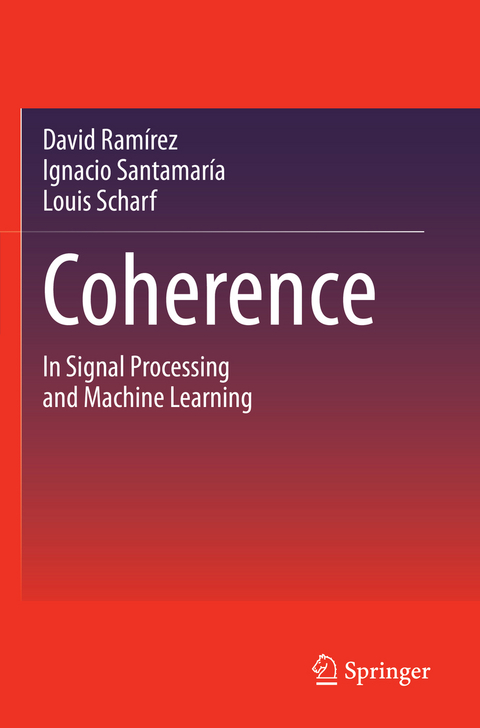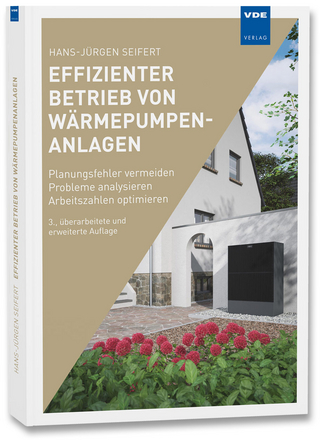
Coherence
Springer International Publishing (Verlag)
978-3-031-13333-6 (ISBN)
This book organizes principles and methods of signal processing and machine learning into the framework of coherence. The book contains a wealth of classical and modern methods of inference, some reported here for the first time. General results are applied to problems in communications, cognitive radio, passive and active radar and sonar, multi-sensor array processing, spectrum analysis, hyperspectral imaging, subspace clustering, and related.
The reader will find new results for model fitting; for dimension reduction in models and ambient spaces; for detection, estimation, and space-time series analysis; for subspace averaging; and for uncertainty quantification. Throughout, the transformation invariances of statistics are clarified, geometries are illuminated, and null distributions are given where tractable. Stochastic representations are emphasized, as these are central to Monte Carlo simulations. The appendices contain a comprehensive account of matrix theory, the SVD, the multivariate normal distribution, and many of the important distributions for coherence statistics.
The book begins with a review of classical results in the physical and engineering sciences where coherence plays a fundamental role. Then least squares theory and the theory of minimum mean-squared error estimation are developed, with special attention paid to statistics that may be interpreted as coherence statistics. A chapter on classical hypothesis tests for covariance structure introduces the next three chapters on matched and adaptive subspace detectors. These detectors are derived from likelihood reasoning, but it is their geometries and invariances that qualify them as coherence statistics. A chapter on independence testing in space-time data sets leads to a definition of broadband coherence, and contains novel applications to cognitive radio and the analysis of cyclostationarity. The chapter on subspace averaging reviews basic results and derives an order-fitting rule for determining the dimension of an average subspace. These results are used to enumerate sources of acoustic and electromagnetic radiation and to cluster subspaces into similarity classes. The chapter on performance bounds and uncertainty quantification emphasizes the geometry of the Cramèr-Rao bound and its related information geometry.David Ramírez is Associate Professor of Electrical Engineering at the Universidad Carlos III de Madrid (UC3M). Before joining UC3M, he was Research Associate and Assistant Professor at the Universität Paderborn, Germany, and Visiting Researcher at University of Newcastle, Australia, University College London, and Colorado State University, Fort Collins. His research interests are in the area of statistical signal processing, as it applies to wireless communication and bio-medicine. He has participated in many national and international research projects related to the these topics. Prof. Ramírez has co-authored more than 75 publications in refereed journals and international conferences/workshops. Prof. Ramírez received the 2012 IEEE Signal Processing Society Young Author Best Paper Award and a Certificate of Merit awarded by the IEEE Signal Processing Society "for outstanding editorial board service for the IEEE Transactions on Signal Processing" in 2020. He is a Senior Member of IEEE.
Ignacio Santamaría is a Professor of Electrical Engineering at the Universidad de Cantabria, Santander, Spain. His research interests lie at the intersection of statistical signal processing, machine learning, and information theory, with special emphasis on applications to wireless communication systems and multi-sensor signal processing for radar and sonar. He has been involved in numerous national and international research projects on these topics, with more than 200 publications co-authored in refereed journals and international conference proceedings. He has been a visiting researcher at the University of Florida, University of Texas at Austin, and Colorado State University, Fort Collins. He has served as a member of the IEEE Machine Learning for Signal Processing and Signal Processing Theory and Methods Technical Committees, and as a steering committee member of the IEEE Data Science Initiative. He served as Associate Editor and Senior Area Editor of the IEEE Transactions on Signal Processing. Prof. Santamaría was general Co-Chair of the 2012 IEEE Workshop on Machine Learning for Signal Processing (MLSP 2012). He was a co-recipient of the 2008 EEEfCOM Innovation Award, and co-author of a paper that received the 2012 IEEE Signal Processing Society Young Author Best Paper Award. He is a Senior Member of IEEE.
Louis Scharf is Research Professor of Mathematics and Emeritus Professor of Electrical and Computer Engineering at Colorado State University, Fort Collins, CO. He holds a courtesy appointment in Statistics. His research interests are in statistical signal processing and machine learning as these disciplines apply to space-time adaptive processing for communication, radar, sonar, and remote sensing; to modal analysis for electric power system monitoring; to spectrum analysis for nonstationary times series modeling and hyperspectral imaging; and to image processing for group-invariant classification and registration. He has made original contributions to matched and adaptive subspace detection; to group-invariant signal processing; to spectrum analysis; and to reduced-rank signal processing. Prof. Scharf has co-authored the books, L.L. Scharf, "Statistical Signal Processing: Detection, Estimation, and Time Series Analysis," Addison-Wesley, 1991, and P.J. Schreier and L.L. Scharf, "Statistical Signal Processing of Complex-Valued Data: The Theory of Improper and Noncircular Signals," Cambridge University Press, 2010. His co-authored book, L.L. Scharf and R.T. Behrens, A First Course in Electrical and Computer Engineering," Addison-Wesley, Reading, MA, 1990, was re-published by Connexions in 2008. Professor Scharf has received several awards for his contributions to statistical signal processing, including the Technical Achievement and Society Awards from the IEEE Signal Processing Society; the Donald W. Tufts Award for Underwater Acoustic Signal Processing, a Diamond Award for Academic ExceIntroduction.- Historical perspective, motivating problems, and preview of what is to come.- Least Squares and related.- Classical correlations and coherence.- Coherence in the multivariate normal (MVN) model.- Classical tests for correlation.- One-channel matched subspace detectors.- Adaptive subspace detectors.- Two channel matched subspace detectors.- Detection of spatially-correlated time series.- Coherence and the detection of cyclostationarity.- Partial coherence for testing causality.- Subspace averaging.- Coherence and performance bounds.- Variations on coherence.- Conclusion.
| Erscheinungsdatum | 04.01.2024 |
|---|---|
| Zusatzinfo | XXI, 487 p. 51 illus., 27 illus. in color. |
| Verlagsort | Cham |
| Sprache | englisch |
| Maße | 155 x 235 mm |
| Gewicht | 767 g |
| Themenwelt | Technik ► Elektrotechnik / Energietechnik |
| Schlagworte | Adaptive subspace detectors • Beamforming and spectrum analysis • Canonical and multiset correlation analysis (CCA) • canonical correlation analysis (CCA) • Classical correlations and coherence • Classical tests for correlation • Coherence and performance bounds • Coherence in compressed sensing • Coherence in science and engineering • Coherence in signal processing • Correlation Analysis • Correlation and partial correlation analysis • hypothesis testing • Hypothesis testing for covariance structure • Kernel Methods • Least squares and its applications • Matched and adaptive subspace detectors • Matrix optimization • Multichannel coherence • Multichannel detection of spacetime signals • Multidimensional Scaling • Multiset CCA • Multistage least squares filtering • Normal and matrix distribution theory • Partial correlation analysis • passive and active detection • Performance bounds and uncertainty quantification • Principal Component Analysis (PCA) • Spectrum analysis • Statistical Signal Processing • Subspace averaging and its applications • Testing for covariance structure • The SVD and GSVD |
| ISBN-10 | 3-031-13333-1 / 3031133331 |
| ISBN-13 | 978-3-031-13333-6 / 9783031133336 |
| Zustand | Neuware |
| Informationen gemäß Produktsicherheitsverordnung (GPSR) | |
| Haben Sie eine Frage zum Produkt? |
aus dem Bereich


